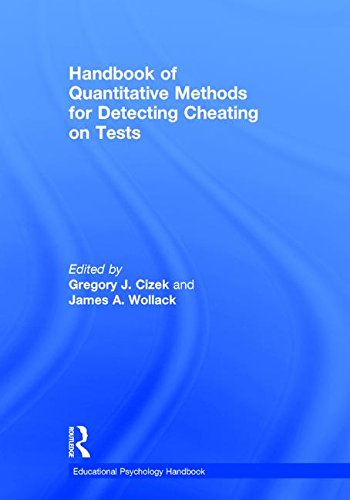

Most ebook files are in PDF format, so you can easily read them using various software such as Foxit Reader or directly on the Google Chrome browser.
Some ebook files are released by publishers in other formats such as .awz, .mobi, .epub, .fb2, etc. You may need to install specific software to read these formats on mobile/PC, such as Calibre.
Please read the tutorial at this link: https://ebookbell.com/faq
We offer FREE conversion to the popular formats you request; however, this may take some time. Therefore, right after payment, please email us, and we will try to provide the service as quickly as possible.
For some exceptional file formats or broken links (if any), please refrain from opening any disputes. Instead, email us first, and we will try to assist within a maximum of 6 hours.
EbookBell Team

0.0
0 reviewsThe rising reliance on testing in American education and for licensure and certification has been accompanied by an escalation in cheating on tests at all levels. Edited by two of the foremost experts on the subject, the Handbook of Quantitative Methods for Detecting Cheating on Tests offers a comprehensive compendium of increasingly sophisticated data forensics used to investigate whether or not cheating has occurred. Written for practitioners, testing professionals, and scholars in testing, measurement, and assessment, this volume builds on the claim that statistical evidence often requires less of an inferential leap to conclude that cheating has taken place than do other, more common sources of evidence.
This handbook is organized into sections that roughly correspond to the kinds of threats to fair testing represented by different forms of cheating. In Section I, the editors outline the fundamentals and significance of cheating, and they introduce the common datasets to which chapter authors' cheating detection methods were applied. Contributors describe, in Section II, methods for identifying cheating in terms of improbable similarity in test responses, preknowledge and compromised test content, and test tampering. Chapters in Section III concentrate on policy and practical implications of using quantitative detection methods. Synthesis across methodological chapters as well as an overall summary, conclusions, and next steps for the field are the key aspects of the final section.